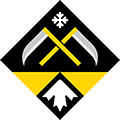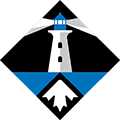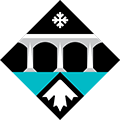Para-Snowboard Program
Developing athletes with a disability to experience competitive snowboarding from grassroots to the national level.
What is Classification?
Paralympic sport exists so that athletes with physical, visual or intellectual impairments have equal opportunities to compete and be successful in sport. Classification groups athletes who have similar impairments together into classes for competition in their particular sport.
The purpose of the Paralympic classification system is to minimize the impact of impairment on sport performance and to ensure the success of an athlete is determined by skill, fitness, power, endurance, tactical ability and mental focus -- the same factors that determine the success of non-Paralympic athletes.
Who gets classified?
An athlete must have an eligible and lasting impairment which meets the specific minimal disability criteria of the sport. Each Paralympic sport has a different classification system, based on the sport’s specific athletic skills and requirements.
An athlete must be classified for every sport in which they compete. Further details on the sport-specific classification system can be found in the IPC sport profile pages for Summer and Winter sports.
What happens in Classification?
There are four steps an athlete will complete to be classified as a Paralympic sport
- Pre-assessment medical information
- Consent
- Athlete evaluation
- physical assessment
- technical assessment
- Observation in competition
Pre-Assessment Medical Information
Athletes must provide evidence of a condition which leads to an eligible impairment. This information is completed by your healthcare provider and given to the sport’s national federation.
Consent
Every athlete must provide written consent to be classified before undergoing classification. If an athlete does not consent to classification they will not be classified and also will not be eligible to compete.
Athlete Evaluation
An athlete evaluation takes place before major competitions. Athletes are scheduled for an appointment for their evaluation and are responsible for arriving 30 minutes prior in comfortable, loose clothing. Athletes should bring:
- Copies of all medical documentation and past classifications
- Photo ID
- All equipment used for competition (goggles, racing chair, skis, etc.)
- All devices used to support the athlete (prosthesis, straps, braces, orthotics, etc.)
- A support person who will attend the classification with the athlete
There are two parts to the athlete evaluation
Physical Assessment
Classifiers will have athletes complete a series of movements, eye exams, or intelligence tests to determine the impact of the impairment on specific tasks and activities fundamental to the sport. Classifiers may also ask the athlete a series of questions to further understand the athlete’s impairment history including:
- How long have you been competing?
- Do you use any devices to support your competition? (Straps, prosthetics, braces, etc.)
- What is your daily/weekly/monthly training routine?
- How did you receive your impairment?
- The physical assessment takes place in a private room at or near the competition venue.
Technical Assessment
Classifiers will ask athletes to perform sport-specific movements on the field of play and observe the impact of an athlete’s impairment on that movement. Athletes with a visual impairment do not complete this step.
At the end of the athlete evaluation, athletes are assigned a class and class status for competition.
Observation
Observation in competition or “first appearance,” is when classifiers observe athletes with physical and intellectual impairments compete for the first time. At the end of first appearance, the athlete will receive their class and class status. The class status denotes whether the classifiers believe an athlete’s impairment may change in the future (Review) or is unlikely to change (Confirm).
Athletes must cooperate to the best of their ability at all times during the evaluation. Failure to do so may result in an athlete being ineligible for competition.
How many times is an athlete classified?
The amount of times an athlete is classified during their career depends on their impairment and level of competition achieved. At a minimum, all athletes will be classified once nationally and once internationally. Classifiers will decide whether an athlete needs to be reviewed and the duration between athlete evaluations.
Reasons for an athlete to require a review include:
- Allocated a review date at athlete evaluation for a certain year or event
- Age
- First international competition
- A deteriorating condition or change of impairment
- The classification rules for the sport change
Most elite Paralympic athletes will be classified internationally more than once during their sporting career.
FAQs
How can I get classified?
Athlete evaluation takes place in the days before a sport’s provincial, national or international level competition.
How can I become a classifier?
A classifier is a medical professional or sports technical expert who is passionate about para-sport. Classifiers are trained and certified by the International Sport Federation. For questions about becoming a classifier, contact xvz.xenuhyrp@pnanqnfabjobneq.pn.
I do not agree with the class I’ve been assigned. What are my options?
Athletes have a right to protest their classification immediately following the athlete evaluation. Athletes should be aware of the sport-specific procedure for protests BEFORE their evaluation.
I have a classification in one sport and want to compete in another, do I need to get classified again?
Yes. Classification is sport-specific. Each athlete will need to be classified by recognized classifiers for the sport and according to the classification rules of the sport to be eligible to compete.
An athlete who meets the classification criteria in one sport may or may not be eligible in another sport.
I was given a “Not Eligible” Class – what does this mean?
An athlete given the class of “not eligible” or NE does not meet the minimal disability criteria for that sport. As classification rules are specific to each sport, an athlete who is not eligible for one sport may still be eligible for another sport as the minimal disability criteria is sport-specific. An athlete given a class of “not eligible” has the right to a second evaluation with a panel of alternative classifiers when the opportunity is available nationally and always internationally. In Canada, some sports provide athletes who do not meet the minimal disability criteria an opportunity to compete in an open or invitational class.
What are the eligible impairments for Paralympic SPORTS?
There are 10 eligible impairments as recognized by the International Paralympic Committee. Each international sport federation will determine the eligible impairments and the minimal disability criteria for that sport.
Impairment & Explanation
Impaired muscle power:
Reduced force generated by muscles or muscle groups, may occur in one limb or the lower half of the body, as caused, for example, by spinal cord injuries, Spina Bifida or Poliomyelitis.
Impaired passive range of movement:
Range of movement in one or more joints is reduced permanently. Joints that can move beyond the average range of motion, joint instability, and acute conditions, such as arthritis, are not considered eligible impairments.
Limb deficiency:
Total or partial absence of bones or joints, from birth or as a consequence of trauma (e.g. car accident or amputation) or illness (e.g. bone cancer).
Leg Length Difference:
Bone shortening in one leg from birth or trauma.
Hypertonia:
Abnormal increase in muscle tension and a reduced ability of a muscle to stretch, which can result from injury, illness or a health condition such as cerebral palsy.
Ataxia:
Lack of co-ordination of muscle movements due to a neurological condition, such as cerebral palsy, brain injury or multiple sclerosis.
Athetosis:
Generally characterized by unbalanced, uncontrolled movements and difficulty in maintaining a symmetrical posture, due to cerebral palsy, brain injury, multiple sclerosis or other conditions.
For the classifications listed below, IPC classifications for snowboard currently do not exist and competition opportunities are currently limited to provincial and national level events. As para-snowboarding continues to grow, Canada Snowboard will continue to work with partners to increase the number of opportunities for competition.
Visual Impairment:
Vision is impacted by either an impairment of the eye structure, optical nerve/ pathways or the part of the brain controlling vision (visual cortex).
Intellectual Impairment:
A limitation in intellectual functioning and adaptive behaviour as expressed in conceptual, social and practical adaptive skills, which originates before the age of 18.
The development of a Snowboarding program for persons with intellectual impairments will continue to be reviewed but will focus on the opportunity for growth within a Special Olympics context.
Hearing Impairment:
Not all hearing losses are the same nor do they affect people the same way. The impact of the hearing loss is affected by age of onset, cause of hearing loss, type of hearing loss and many other factors.
I still have questions. Where can I find more information?
Canadian Paralympic Committee
Rob Frost, Senior Coordinator, High Performance & Games Enhancements, esebfg@cnenylzcvp.pn
Canada Snowboard Para-Snowboard Program
Kim Krahulec, Para-Snowboard Program Manager, xvz.xenuhyrp@pnanqnfabjobneq.pn












